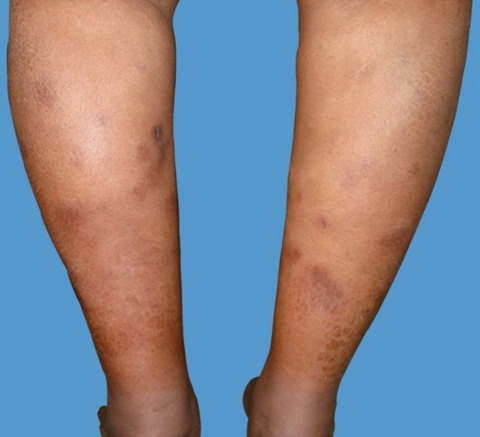
Synonym: Bazin’s Disease, Erythema Induratum
Nodular Vasculitis is a form of lobular panniculitis associated with subcutaneous blood vessel vasculitis with subsequent ischemic changes that produce lipocyte injury, necrosis, inflammation, and granulation. An immune complex-mediated vascular injury has been hypothesized, but in most cases there is no direct evidence to support an immunologic mechanism. Synonyms are erythema induratum and Bazin’s disease, but these terms are now reserved for those cases of nodular vasculitis that are associated with mycobacterium tuberculosis.
Causes of Nodular Vasculitis
Causes: Erythema induratum/nodular vasculitis complex is a multifactorial disorder. Mycobacterium tuberculosis and delayed-type hypersensitivity are considered etiologic factors for erythema induratum of Bazin type. Recently, hepatitis C virus has been suggested, but a direct relationship remains unclear.
- M tuberculosis is the cause of erythema induratum.
- The cause is unknown in cases of nodular vasculitis with a negative tuberculin skin test reaction.
Symptoms of Nodular Vasculitis
Erythematous subcutaneous nodules and plaques usually on back of both calves. Lesions bluish-red, firm. Form persistent ulcers that drain serous fluid. Heal with atrophic stars. Onset in middle-old age, usually women.
Diagnosis
By clinical findings and biopsy.
Treatment
Antituberculous therapy in those cases where a mycobacterial etiology is proved. In other cases, bed rest, tetracyclines, and potassium iodide have proved effective. Systemic glucocorticoids are sometimes necessary for remission. In some cases dapsone is effective.
References